Expert Interview: Communicate with Professor Qinglin Sheng from Northwestern University to obtain relevant suggestions for enzyme biosensors
Institution Visit: Visit the Sichuan Dongpo Chinese Paocai Industrial Technology Research Institute and communicate with scientific research enterprises
Company Visit: Experience the Technological Power of Modernization in China's Food Industry at Sichuan Pixiandouban Co., Ltd
Public Interview: Visit Meishan, the "hometown of Chinese paocai", to investigate the awareness and acceptance of nitrite among local people and different groups
Exchange and Cooperation: CCiC, Northwest Regional Exchange Conference
External Publicity: iG20, Campus Activities, Campus Lectures

On June 13, 2023, the team had a discussion with Professor Sheng Qinglin from Northwest University regarding the difficulties encountered in the ongoing project. Professor Sheng provided relevant opinions and suggestions.

Sheng Qinglin is a male professor with a Ph.D. degree. He is a doctoral supervisor and serves as the Deputy Secretary-General of the 5th Council of the Shaanxi Agricultural Engineering Society, a member of the Shaanxi Food Science and Technology Society, a member of the Shaanxi Pharmaceutical Analysis Professional Committee, an expert in the review of special food production processes in Shaanxi Province, a member of the Xi'an Youth Science and Technology Association, a young editor of journals such as "Food Frontiers," "eFood," "Metallurgical Analysis," and an editorial board member of journals such as "Processes." In 2013, he was awarded the title of "Shaanxi Provincial Young Science and Technology Star" and was selected for the "Outstanding Young Academic Backbone Support Program" at Northwest University. In 2017, he was awarded the title of "Outstanding Young Talent in Ordinary Higher Education Institutions in Shaanxi Province." In 2023, he received the 14th Shaanxi Youth Science and Technology Award. His main research areas include food safety testing, electrochemical sensing, and electrochemical sterilization. He has completed research projects funded by the National Natural Science Foundation, provincial funds, and the Department of Education funds.
Question: Any suggestions regarding the "sensor name"? Answer: Generally, the sensor is called "nitrite sensor" or "nitrite ion sensor." If you want to emphasize nitrite reductase, it can be referred to as a "biological sensor based on nitrite reduction enzyme," which is more standardized.
Question: Any suggestions regarding "direct-type sensors"? Answer: Enzymes usually have active metal centers, but it is necessary to determine the position of the metal center of the target enzyme to assess the ease of direct electrochemical transfer. In the professor's impression, the metal active center of nitrite reductase is not easily exposed. Moreover, there are currently no particularly successful cases of direct electrochemical sensing in product applications.
Question: We plan to load the enzyme onto a metal carrier, such as gold nanoparticles. Answer: Agreed. If the enzyme is loaded onto gold nanoparticles, it can promote electron transfer to some extent and increase the feasibility of sensor fabrication.
Question: Any suggestions regarding "natural mediator enzyme sensors"? Answer: For the binding of methylene blue and cytochrome C, cytochrome C itself has redox properties and can directly undergo electron transfer under suitable conditions. However, it is uncertain whether they can bind well with nitrite reductase. Currently, the most mature method is to use small molecules as mediators to connect with the enzyme, which can produce electrochemical responses. The professor suggests that both of the above methods can be tried, but he predicts that the mediator method will yield better results.
Question: Any suggestions regarding "enzyme activity and lifespan"? Answer: Indeed, it is necessary to consider whether biomolecules can maintain normal activity on a fixed surface. However, this issue can be resolved by using enzyme films made on-site. Moreover, in terms of cost, if done on-site, the cost can also be reduced.
Question: Regarding the fabrication of sensors, we plan to encapsulate enzyme molecules with metal-organic framework materials (such as MOF). How can we ensure enzyme activity and improve electron transfer capability? Answer:For the binding of ferricytochrome c and pseudoazurin, ferricytochrome c itself has redox properties and can undergo direct electron transfer under suitable conditions, but it is uncertain whether they can bind well with nitrite reductase. The most mature method currently is to use small molecules as mediators to connect the enzyme, allowing the complex to exhibit electrochemical response. The teacher suggests that both methods can be tried, but he predicts that the mediator method will yield better results.
Question: Any suggestions regarding "enzyme activity and lifespan"? Answer: Indeed, it is necessary to consider whether biomolecules can maintain normal activity on a fixed surface. However, this issue can be resolved by using enzyme membranes prepared in real-time. Moreover, the cost can be reduced if produced in large quantities.
Question: Regarding the fabrication of sensors, we plan to encapsulate enzyme molecules with metal-organic framework materials (such as MOFs). How can we ensure enzyme activity and enhance electron transfer capability? Answer: Some materials in MOFs have structural similarities to natural enzyme molecules and possess active centers. This can help ensure enzyme activity and, to some extent, promote electron transfer.
Question: Are there any recommended materials to improve the efficiency of enzyme electron transfer? Answer: Currently, gold is commonly used to facilitate faster and more direct electron transfer. Carbon materials are also effective due to their small size, which may enhance electron transfer. However, there may be differences between theory and reality, so it is important to conduct experiments and make multiple attempts.
Question: There are studies suggesting that gold nanoparticles modified with histidine have similar effects to nanozymes and can catalyze the oxidation of nitrites. What is the teacher's opinion? Answer: Under certain potentials, many materials can promote the oxidation of nitrite ions. However, enzymes are preferred because they lower the oxidation potential of nitrite ions, reducing the energy required for the reaction.
Question: We are considering developing a "whole-cell sensor." Any suggestions? Answer: The core technology of a whole-cell sensor lies in its metal ions. Catalytic reactions rely on the active center ions, along with auxiliary proteins or other structures, to enhance spatial selectivity. However, implementation is challenging because the activity of living cells is difficult to maintain. For example, the survival of living cells requires a liquid environment, while most sensors are solid-state. Although some techniques can make the sensors partially gel-like, cells are still prone to shrinking and dying.
Question: How can we amplify the transmitted electrical signal? Answer: If there are team members with relevant expertise, you can seek their assistance in developing the necessary devices. One specific suggestion is to use a Faraday cage, which is a device capable of measuring microcurrents. However, in general, conventional measuring devices are sufficient for measuring the potential of nitrite enzyme reactions.
Question: If we utilize an "electron donor," can it assist in mediating electron transfer to the electron-conducting material? Answer: Yes, it is possible. It is recommended to directly and indirectly place the enzyme on the electrode and conduct experiments using both methods to determine which one yields better results.

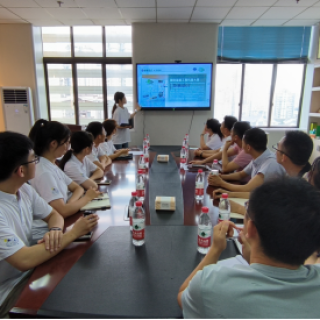
Sichuan Dongpo Chinese Pickle Industry Technology Research Institute is a professional research and promotion institution for pickle industry technology located in Meishan City, Sichuan Province. It is a new type of research and development institution that integrates "industry, academia, and research" based on the "Pickle Industry Technology Innovation Alliance," "Pickle Innovation Team," and "SME Service Platform." The institute has established the first pickle microbial strain resource library, collecting more than 11,000 strains of various pickle microbial resources, covering over 100 species of pickle microorganisms in more than 40 genera, and exploring the microbial distribution of pickles in China. It has pioneered key technologies such as high-density cultivation, metabolic regulation, and activity preservation to overcome the bottleneck of preparing "highly active and highly stable" functional bacteria for direct addition to pickles, breaking the international monopoly.

Zhang Wei is a male senior engineer born in 1990. He currently serves as the Vice Dean of the Sichuan Dongpo Chinese Sauerkraut Industry Technology Research Institute. In 2018, he was selected as a talent for innovation and technology development in Meishan City and was appointed as a member of the Expert Committee of the Meishan Food Safety Association. In 2019, he received the "Dongpo Talent" award for outstanding young talents, and in 2021, he was recognized as one of the "Top Ten Young Talents of Dongpo."

Wang Dongdong is a male senior engineer born in 1990. He holds a Ph.D. degree and currently serves as the Deputy Chief Engineer of the Sichuan Dongpo Chinese Sauerkraut Industry Technology Research Institute. He was selected as a talent for innovation and technology development in Meishan City and is a member of the Expert Committee of the Meishan Food Safety Association. He has been awarded the "Meizhou Star Elite" award, the "Dongpo Talent" award for outstanding young talents, the "Top Ten Technical Innovation Experts in Dongpo District," and the individual contribution award for the Sauerkraut City Park.
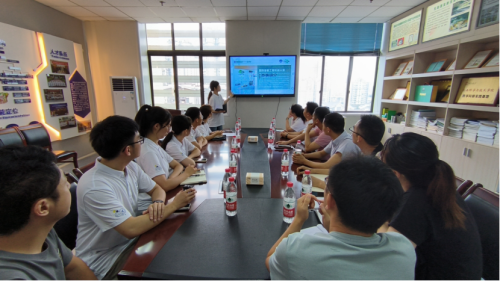
In August 2023, the NPU-CHINA team visited the research institute. In the symposium regarding the "Biological Sensor Based on Nitrite Reductase" project proposed by the team, the research institute had in-depth discussions and provided further guidance on project background, technical feasibility, technical focus, research directions, patent applications, feasibility, and data requirements. Preliminary consensus was reached on conducting experiments, research projects, and talent exchanges in the future.
In the sauerkraut production process, nitrite is primarily generated through bacterial action. When nitrate in the sauerkraut raw materials interacts with bacteria, the bacteria reduce nitrate to nitrite. This process usually occurs during fermentation, especially during the lactic acid bacteria fermentation in sauerkraut. Lactic acid bacteria produce an enzyme called nitrite reductase, which can reduce nitrate to nitrite. To ensure the safety of nitrite in sauerkraut, the production process usually controls the generation and degradation of nitrite. One common method is to add nitrite inhibitors to react with nitrite, forming harmless compounds and reducing the risk of nitrite converting to nitrosamines. Additionally, strict control of temperature and time during fermentation, as well as the use of high-quality raw materials, can reduce the risks associated with nitrite generation and degradation.
To achieve maximum speed in sensor applications, the following measures can be taken:
A. Optimize the sensor's response time: By improving the working principle of the sensor and signal processing algorithms, the response time of the sensor can be shortened, enabling fast data acquisition and transmission.
B. Reduce sensor latency: By optimizing the hardware design of the sensor and signal transmission path, sensor latency can be reduced, improving real-time data processing.
C. Increase the sensor's sampling rate: By increasing the sensor's sampling rate, data can be obtained more frequently, enhancing data accuracy and real-time capabilities.
D. Introduce intelligent algorithms and edge computing: Utilizing intelligent algorithms and edge computing technology, data processing and analysis can be performed at the sensor end, reducing data transmission latency and enabling rapid response and decision-making.
In conclusion, maximizing the speed of nitrite reductase sensor applications while ensuring accuracy is an important consideration. By optimizing response time, reducing latency, increasing sampling rate, and introducing intelligent algorithms, rapid data acquisition and real-time analysis can be achieved, providing more efficient and reliable support for various applications.
Further considerations for pre-calibration and user-friendly usage of sensors are essential for improving sensor performance and user experience. Accurate calibration and simplified operating methods can enhance the accuracy and reliability of sensors while improving user convenience and satisfaction. This will contribute to the application and development of sensor technology, providing better solutions for various fields' needs.
In the catering industry, nitrite reductase sensors can be used to detect the nitrite content in ingredients and food. Catering companies can use nitrite reductase sensors to quickly and accurately measure the nitrite content in ingredients, ensuring food safety and quality, and improving customer satisfaction.
In the food production industry, nitrite reductase sensors can be applied to monitor and control the nitrite content during the production process. Food production companies can utilize nitrite reductase sensors to real-time monitor the nitrite content in food, ensuring that the products meet food safety standards, and improving production efficiency and product quality.
In household use, nitrite reductase sensors can be used for food testing and monitoring at home. Household users can use nitrite reductase sensors to detect the nitrite content in ingredients and food, ensuring the health of family members and avoiding risks such as food poisoning.
In the field of environmental monitoring, nitrite reductase sensors can be applied to detect nitrite in water and soil. Environmental monitoring agencies can use nitrite reductase sensors to monitor the nitrite content in water and soil in real-time, promptly identify and address environmental pollution issues, and protect the ecological environment and public health.
Nitrite reductase sensors can not only be applied to nitrite detection but also expanded to the detection of other chemical substances. By developing and applying these sensors, the accuracy and efficiency of food safety testing can be improved, ensuring public health.
To further promote and publicize the use of nitrite reductase sensors, data support is needed. This data can be obtained through actual testing and research projects, improving the reliability and practicality of the sensors, and promoting their wide application in food safety and environmental monitoring fields.
By conducting multiple experiments, comparing with standard solutions, and repeating experiments under different conditions, the accuracy and reproducibility of the sensors can be evaluated. The accuracy and reliability of this data will provide strong support for the application and promotion of the sensors.
Experts remind us to consider intellectual property issues and the potential commercial value and broad application prospects of nitrite reductase sensors. Therefore, we will collect and organize preliminary experimental data and promptly file patent applications. Through patent protection, we can ensure that our research achievements are fully protected and gain a competitive advantage in the market. In addition, patent applications can bring us opportunities for business cooperation and technology transfer, further promoting the development and application of this sensor technology.
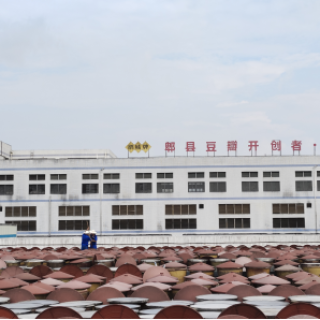

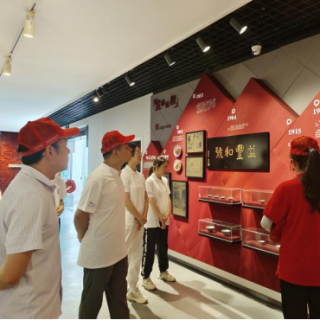
Sichuan Pixian Douban Co., Ltd. is a "Sichuan Industrial Tourism Demonstration Base." In August 2023, the NPU-CHINA team visited the Douban factory in Pixian, known as the "City of Juans", during the summer vacation. They visited the company's cultural exhibition hall, the largest intelligent sun-drying field, automated production workshops, and the intangible cultural heritage skills experience base of Pixian Douban. They gained a comprehensive understanding of the historical culture, production techniques, and production processes of Pixian Douban, from its development journey to fermentation processes and the preservation of intangible cultural heritage skills.
Lin Huanzhi, male, currently serves as the Manager of the Product Technology R&D Center at Sichuan Pixian Douban Co., Ltd. He is a senior engineer, a skilled craftsman in Pixian, and a certified auditor for the national registered QMS quality management system and FSMS food safety management system. He is dedicated to innovative research on fermentation condiments and the application of microbiology transformation. He has obtained 2 invention patents and 8 utility model patents. He has published 2 papers on Chinese condiments. The "New Colored Red Douban" project he led is at the forefront of technology in China. In company and industry training, he has guided more than 15 junior and intermediate engineering and technical personnel (including master's students) and trained over 500 management and operational personnel. He has also guided more than 10 soy sauce and fermented sauce (including Pixian Douban) companies in quality improvement and food safety enhancement.
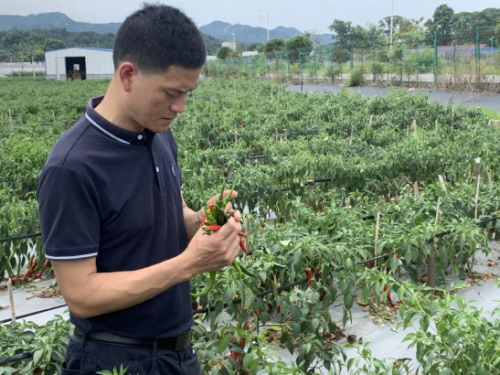
After the visit, the practical team had a discussion and exchange with Lin Huanzhi, the Deputy Manager of the R&D Department, and Chen Haifeng, the Head of Basic Research and Development at the company's technical center. The experts affirmed and supported the NPU-CHINA team's competition project, considering this interview as an opportunity for mutual learning and exchange. It was the team's first interaction and collision with an enterprise. In addition to technical issues related to the project, the team focused more on the application and future development of the product. The discussion provided new ideas for the team's research. The team members will integrate the expert opinions, improve the experimental design, and enhance the feasibility of the research. Meanwhile, they will guide the team members to broaden their horizons, think from the perspective of the biotechnology industry, integrate their knowledge with practical production, and promote the implementation and transformation of innovative results. This aims to cultivate high-quality talents with practical abilities and innovative spirit.
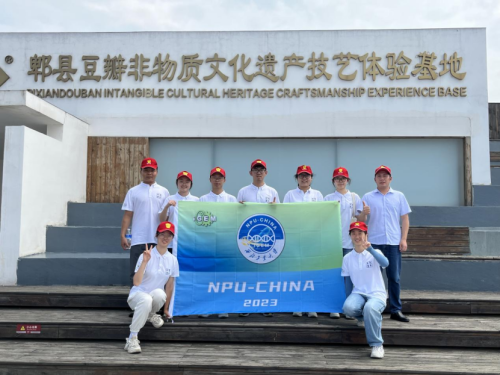
During the conversation, we learned that when it comes to degrading nitrite, companies need to consider the safety and cost issues of using the product. Firstly, in order to degrade nitrite, it is necessary to use enzymes that have been tested and meet relevant regulations. In addition to considering the degradation efficiency of the enzyme, the safety of the enzyme itself and the reaction products should also be taken into account. Secondly, there is the issue of cost. If the current product already meets the qualified standards, degradation will increase the company's costs. However, through discussion, we proposed that degradation can be used to create "zero" additive products that are more appealing to consumers.
If we want to develop products for nitrite detection, they should meet several requirements. Firstly, the accuracy of the detection should exclude the influence of other substances and the influence of enzyme activity under different conditions to ensure accurate results. Secondly, the detection limit should be sufficiently low to ensure sensitivity. Thirdly, the issues of enzyme preservation, use, replacement, and the cost of detection should also be considered. The experts also guided us to pay attention to issues such as the sampling volume, sampling standards, and sample pretreatment in the sampling process. They suggested that we improve research flexibility and not only focus on nitrite issues in food but also consider other safety issues, such as aflatoxin in spoiled food.
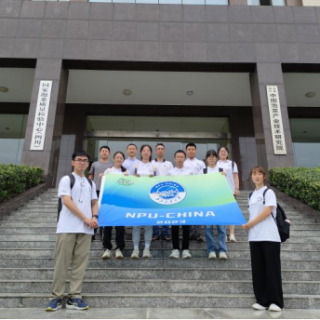
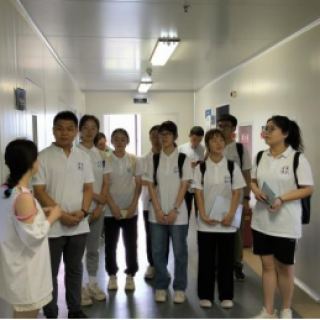
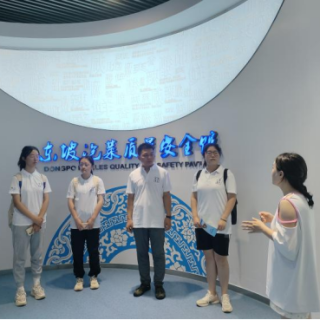
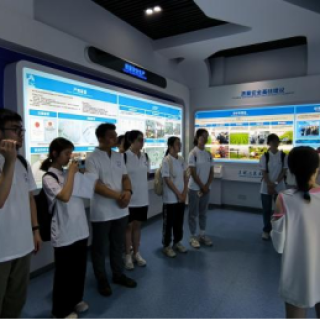
Introduction: The National Kimchi Quality Supervision and Inspection Center (Sichuan) is an institution in China specialized in the supervision and testing of kimchi product quality. It is a national comprehensive testing and inspection institution authorized by the General Administration of Quality Supervision, Inspection and Quarantine and the National Accreditation and Accreditation Supervision and Management Committee. The center has advanced instruments and equipment, as well as a team of experts in chemistry, biology, sensory evaluation, quality management, and standardization with high academic levels and rich experience. They possess internationally leading inspection and testing technologies.
In August 2023, the NPU-CHINA team visited the National Kimchi Quality Supervision and Inspection Center. They learned about the specific work content and standards of kimchi quality supervision and inspection by visiting the laboratory's testing equipment and operating procedures. In the Dongpo Kimchi Quality and Safety Museum, the team gained a detailed understanding of the standard formulation, raw material management, and production supervision in the kimchi industry. They also learned about the positive effects of probiotics and prebiotics contained in kimchi on human health. Here, our professional knowledge and skills were expanded, and our awareness of quality and responsibility was further enhanced. We are able to better understand and pay attention to food quality and safety issues, making contributions to the health and safety of the public.
Modernization of the Food Industry: Understanding the modernization process and development trends in the food industry.
Exploring Technological Power: Discussing the application and impact of technology in the food industry.
Innovation and Development: Exploring innovative technologies and future development directions in the food industry.

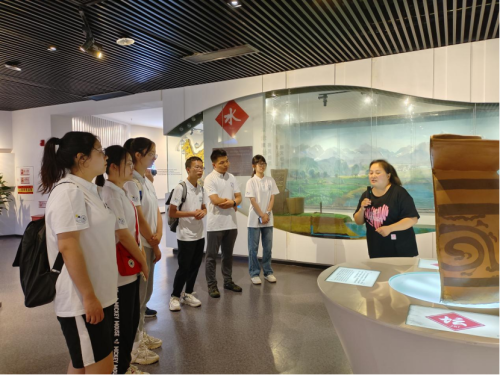

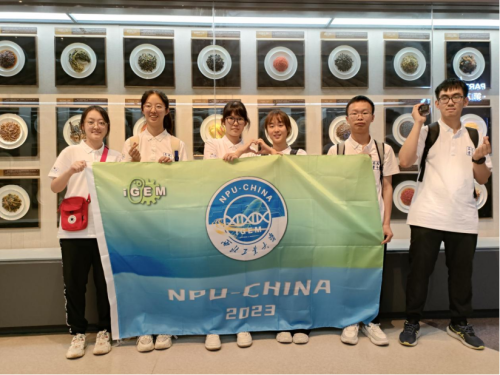
The China Kimchi Museum is the first professional museum in China dedicated to kimchi. It systematically interprets and promotes Chinese kimchi culture and industry. The exhibition area covers more than 2,000 square meters and consists of sections on history and culture, production and processing, inheritance and innovation, products and brands, tasting and experience, quality and safety, and future prospects. The museum embodies cultural and knowledge aspects, interactivity and experiential elements, originality and artistic qualities. It is a landmark exhibition hall for the exhibition of Chinese kimchi.
Here, the team members started their exploration from the "Zu" of the Yangshao Culture 7,000 years ago, and delved into the past and present of kimchi from the dimensions of history and culture, production and processing, inheritance and innovation, quality and safety. They "tasted" 3,000 years of kimchi, experienced the taste of China, and gained insights into the wisdom of harmonizing nature and humanity. It enhanced cultural confidence and strengthened national pride.
Learning the History of Kimchi, Understanding the Future Development Path
Learning the History of Kimchi: Understanding the origin and development of kimchi.
Understanding the Future Development Path: Exploring the future development trends and prospects of the kimchi industry.
Cultural Significance of Kimchi: Exploring the important role of kimchi in cultural heritage and food culture.



Background:Sichuan Province is known as the "Hometown of Chinese Kimchi," and Meishan City in Sichuan is known for its kimchi production, which has a history of over 1,500 years. It is a combination of Meishan's long history and culture and the Three Su Culture, representing the wisdom of generations of laboring people. Today, Dongpo Kimchi has become the hope for more than 220,000 farmers to increase their income and has supported a distinctive industry with annual sales revenue exceeding 20 billion yuan, loved by a wide range of consumers. In July 2023, the NPU-CHINA team visited Meishan, Sichuan, and conducted visits and research in places such as Su Mu Park and street restaurants and shops where people gather.
In the "Hometown of Chinese Kimchi," when asked, pedestrians said they regularly consume kimchi, and there are people in their homes who make kimchi. "In 365 days of the year, there is never an empty jar of kimchi in my house." "In Meishan, every household has a jar of kimchi, and there are people in every household who know how to make kimchi." Homemade kimchi can be made with various ingredients, including meat, fruits, vegetables, and even "bathing" kimchi, which is soaked overnight and ready to be consumed the next morning.
Regarding homemade kimchi, interviewees stated that homemade kimchi is simple to make, using vegetables, salt, and fermented brine, and it is very healthy and safe without any safety issues. If any spoilage occurs, such as bloating, the problematic kimchi should be discarded.
As for commercially produced kimchi, people mentioned that when purchasing kimchi, they prefer to choose products from well-known local companies. These products have undergone multiple safety inspections at the national level, ensuring food safety. However, for some small workshops or "unregulated" products, there may be safety hazards such as excessive nitrite content. Therefore, when buying kimchi, people tend to select kimchi produced by reputable manufacturers to ensure food safety.
Regarding the issue of nitrite content in kimchi, some individuals believe that it is just a marketing gimmick by businesses. They argue that the people of Meishan have been consuming kimchi for thousands of years without hearing about any food safety issues related to nitrites. Others believe that it is not scientifically valid to only discuss toxicity without considering dosage. While nitrites do pose certain safety concerns and are classified as a Group 2A carcinogen by the International Agency for Research on Cancer, in daily life, people do not consume kimchi every day, and the amount consumed is not significant. Therefore, they believe that there are no significant safety issues regarding nitrite content in kimchi.
Sichuan kimchi, known as the "soul of Sichuan cuisine," is an essential part of restaurants and eateries in Sichuan. Almost all Sichuan cuisine restaurants serve kimchi. The variety of kimchi offered in restaurants is diverse, including traditional pickled radish and cucumber, as well as innovative varieties such as pickled cabbage and cauliflower, catering to different tastes.
In small restaurants and eateries, many businesses choose to make kimchi themselves using traditional methods and family recipes to ensure that the kimchi's flavor aligns with local preferences. Large restaurants tend to purchase kimchi from well-known brands such as "Jixiangju," "Laotanzi," and "Chuannan." These brands have usually undergone multiple safety inspections at the national level, ensuring food quality and safety.
We can see that street restaurants in the Meishan region play a crucial role in promoting and consuming kimchi. Kimchi holds a significant position in the local culinary culture, and the diversity of homemade and branded kimchi choices in restaurants allows consumers to choose according to their personal preferences. This further emphasizes the importance of kimchi in the Meishan region.
1. Inheritance of kimchi culture: The residents of the Meishan region have a deep historical heritage in the production and consumption of kimchi, and homemade kimchi holds an important place in their daily lives.
2. Homemade and commercially produced kimchi: People generally consider homemade kimchi to be safe and healthy. However, when purchasing commercially produced kimchi, they tend to prefer products from well-known companies that have undergone national safety inspections.
3. Food safety awareness: Most residents are cautious about food safety issues, especially when choosing products from small workshops or unknown brands, to avoid potential risks.
4. Perception of nitrite content: There are different opinions regarding nitrite content. Some believe that the small amount consumed does not pose a safety issue, while others believe that the relationship between dosage and toxicity should be considered.
In summary, the kimchi culture in the Meishan region has a profound influence on its residents. Food safety issues and concerns about nitrite content have sparked different perspectives. These issues need to be addressed and addressed jointly by the government, businesses, and residents while promoting the development of the kimchi industry.

During the kimchi-making process, nitrites are typically produced as intermediate products. Additionally, nitrites are commonly used as food additives to prevent bacterial growth and maintain the color and texture of food. However, long-term excessive intake of nitrites can have negative effects on human health, such as an increased risk of cancer. Understanding the public's knowledge and awareness of nitrites is crucial.
We designed this survey to investigate the public's level of knowledge and acceptance of nitrites. We collected over 300 questionnaires from respondents, including university students, biologists, and professionals in the food industry from different countries. With this information, we can provide relevant food safety education and awareness to the public, promoting healthy eating habits.
All survey results are strictly protected by third-party platforms and our own measures. The information collected is solely used for our project analysis.
Conference of China iGEMer Community, abbreviated as CCiC, is a national exchange conference initiated by Chinese iGEM teams. It aims to provide a platform for resource sharing among participating iGEM teams and young enthusiasts of synthetic biology in China, promoting mutual learning and communication. At the conference, iGEM teams from various regions of China gather together to exchange project designs and progress, engage in intellectual collisions, and receive targeted questions and suggestions from guests and judges. Additionally, experts and scholars in the field of synthetic biology deliver exciting lectures.
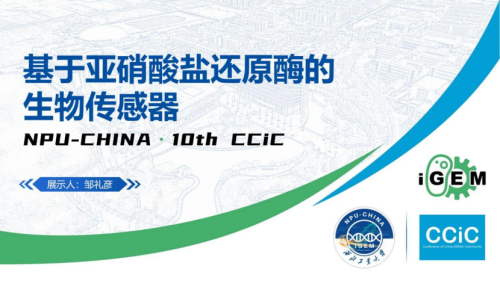
On August 8, 2023, our team participated in The 5th Northwestern China Meetup Signature board and had exchanges and learning sessions with AFMU-China, CSU-CHINA, LZU-CHINA, UM-Macau, XJU-China, and NWU-CHINA-A. Each team showcased their projects from aspects such as project background, experimental design, modeling, human practices, and future plans. They also highlighted the strengths, weaknesses, and uncertainties of their team projects. During the Q&A session, participants actively asked questions about other teams' projects and provided suggestions for improvement. The meetup yielded positive results.
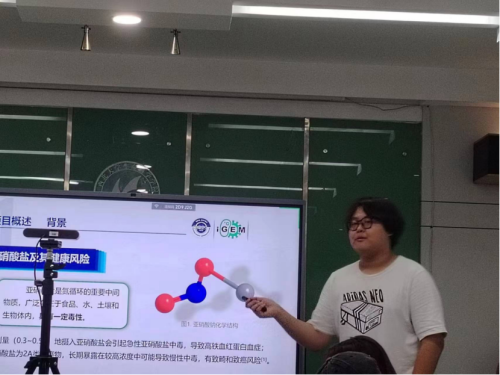

Unity is powerful, and conducting closer collaborations and engaging in more interesting educational activities are what we need in the competition and what the public enjoys. We participated in the iG20 event organized by LZU-CHINA, where we promoted the projects of various teams to the public and popularized knowledge about synthetic biology. This gained widespread social attention and had a greater impact on the world.

In June 2023, the NPU-CHINA team organized a biological model making competition at Northwestern Polytechnical University, targeting all students. This competitive event is based on biological knowledge and manual craftsmanship, encouraging students to explore biology, cultivate innovation abilities, and engage in hands-on practice. Participants can choose different themes at various levels, such as organisms, organs, cells, to create models and demonstrate their understanding of biology and creative expression abilities.
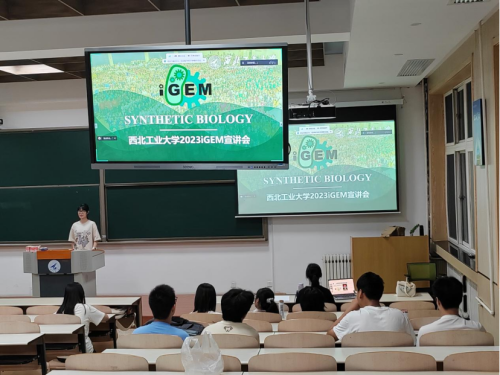
Synthetic biology, as an emerging interdisciplinary field, has broad application prospects and tremendous innovation potential. The iGEM competition is an international genetic engineering machine competition aimed at encouraging student teams to solve real-world problems using synthetic biology approaches. During campus lectures, we introduce the concepts and principles of synthetic biology to students, showcase our team's efforts and achievements in the iGEM competition, and share our experiences and lessons learned in team collaboration, innovative thinking, and problem-solving processes. Our goal is to inspire students' interest in the field of synthetic biology and motivate them to pursue further learning and research.